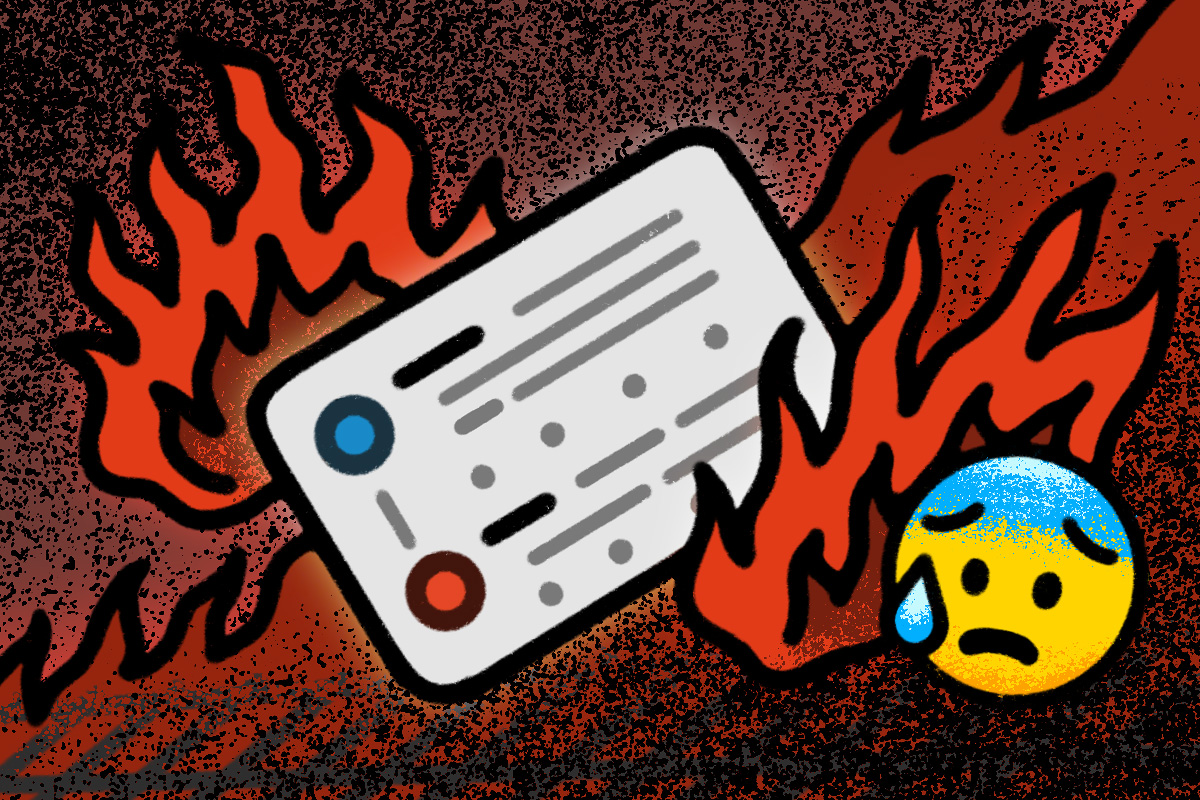Why ‘Roasting’ Your Customers May Help Your Brand
Why ‘Roasting’ Your Customers May Help Your Brand
Research from Professor Gavan Fitzsimons found that “playful provocation” increases customer-brand connection
You might think that making fun of your customers is never a good idea. But some brands may have found the right recipe for engaging consumers by “roasting" them in a fun and inoffensive way.
In a new paper published in the Journal of Consumer Research, Professor Gavan Fitzsimons of Duke University’s Fuqua School of Business, with Fuqua PhD student Demi Oba and Holly S. Howe of HEC Montréal (a former Fuqua PhD) found that the use of “playful provocation” increases brand connection, by making brands more human-like and relatable.
“Consumers tend to be drawn to brands that feel more like other people than an amorphous, corporate entity,” Fitzsimons said, "which makes teasing a potentially powerful connector."
Across 11 studies and more than 7,000 participants, the researchers found that teasing increases customer-brand connection, compared with humor alone. However, they also found that when provocation exceeds a certain level, it elicits “anti-social” feelings about the brand that can dampen engagement.
The authors experimented with AI and Large Language Models (LLM) in their studies, showing the potential for brands to advance-test the degree of teasing different audiences would best respond to.
Self-Brand Connection
The researchers hypothesized that “playful provocation” drives higher connection with the brand — the so-called “self-brand connection.”
“Self-brand connection measures a variety of things including how consumers can use the brand to represent themselves to others,” said Demi Oba. “How a brand helps them become the type of person they want to be.”
Previous research had shown that self-brand connection leads to positive outcomes, such as willingness to advocate for the brand and spread information about it, Oba said.
While striking a funny tone has often been considered one of the best marketing tools, brands like Wendy’s and Ryanair have successfully blended ‘funny’ with provocation, the researchers said.
To test the effectiveness of their campaigns, the researchers studied Wendy’s 2019 #NationalRoastDay, a self-declared national holiday (which has now become a yearly campaign) when the brand’s Twitter (now X) account feels licensed to provoke customers with tweets like “quit trying to model for Teen Vogue” — directed to a young consumer.
The researchers collected all the tweets from Wendy’s campaign, along with the likes, replies, and follows the tweets received. They then recruited 1,600 online participants to assess how funny or teasing the tweets were perceived.
They found that the more the tweets were rated as ‘teasing,’ the more engagement they earned (likes, replies, follows).
In a follow-up experiment, the researcher focused on Wendy’s tweets from a period beyond “NationalRoastDay” and confirmed the results of the previous study.
A similar study examining Ryanair’s 2023 TikTok feed further validated their findings.
The boundaries of “prosocial” and “antisocial” teasing
In an online experiment, the research team wanted to examine whether provocation without sufficient playfulness could be counterproductive.
The researchers hypothesized that if teasing makes customers feel the brand is more like a real person (“anthropomorphism”), then an “antisocial” tone could make people associate the brand with negative human behavior — like being a “bully” or an “aggressor,” the researchers write.
In the experiment, the researchers recruited 1,500 participants to imagine they saw a Valentine’s Day special Pizza Hut advertisement. One group saw a “prosocial” ad, and other two groups saw either an “antisocial” or a purely funny ad.
Prosocial ad: “Make your plans now for a cheap date that’s almost as cheesy as you are.” Antisocial ad: “Make you plans now for a cheesy date that’s almost as cheap as you are.” Purely funny ad: “Make your plans now for a cheap and cheesy Valentine’s date.”
The study found that the prosocial text led to higher self-brand connection than both the antisocial and the purely funny statements.
Further studies found that provocation always drives engagement, but when it leans toward the “anti-social,” it triggers bad feelings about the brand, thus erasing the positive outcomes.
Using AI and Large Language Models to find the right amount of teasing
In two further studies, Oba, Howe, and Fitzsimons trained a Google Gemini Large Language Model using the definitions of playfulness and provocation from the previous experiments and asked the model to rate the “relative anti-sociality” of Wendy’s #NationalRoastDay campaign.
The researchers also asked the model to rate tweets from brands not known for teasing (Microsoft, IBM, Jeep, Ford Trucks).
“We asked the model ‘How playful are these tweets?’ and ‘How provoking’ are they?” Fitzsimons said.
These studies confirmed that “antisociality” is associated with lower engagement on social media.
“It matters that playful and provoking are balanced, or that it's more playful than provoking,” Oba explained. “When a tease is much more provoking than playful, that's where you run into potential negative results.”
Marketers can test the sensitivity of their audience
As cultural norms evolve and more brands experiment with teasing, more people may find the same teases less provoking, Fitzsimons said.
But certain topics may remain more sensitive than others, he said.
“Where should we push? Where should we not?” he said. “If you're a clothing company, you may be talking about people's bodies, and some people may be more provoked than you would have assumed. This shows that this is a sensitive area, a ‘hot button’ domain where teasing will be seen as exceedingly provocative and will tend not to be as effective.”
Brands can use data from their previous campaigns to train AI and LLM tools and help them identify whether teasing has been effective in the past, Fitzsimons said.
“Let's imagine you went back and looked at our last 20 campaigns, and had people assess how playful and how provoking those ads were,” he said. “If you see that a certain level of playful provocation led to successful campaigns, it suggests that a similarly teasing campaign could be really positive.”
But you need to know your audience and their sensitivity, Fitzsimons said.
“You have to know who you're targeting, making sure they won’t walk away feeling bruised and hurt,” Oba said.
This story may not be republished without permission from Duke University’s Fuqua School of Business. Please contact media-relations@fuqua.duke.edu for additional information.

